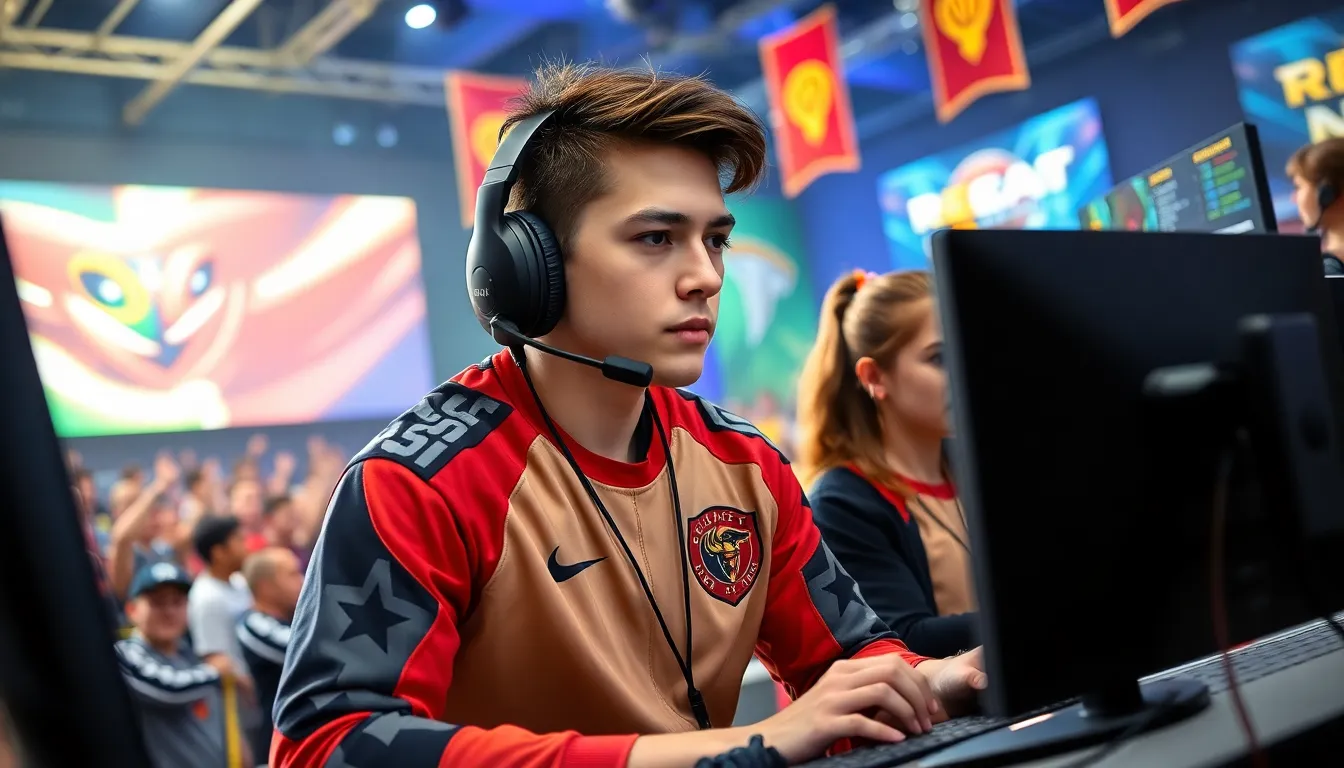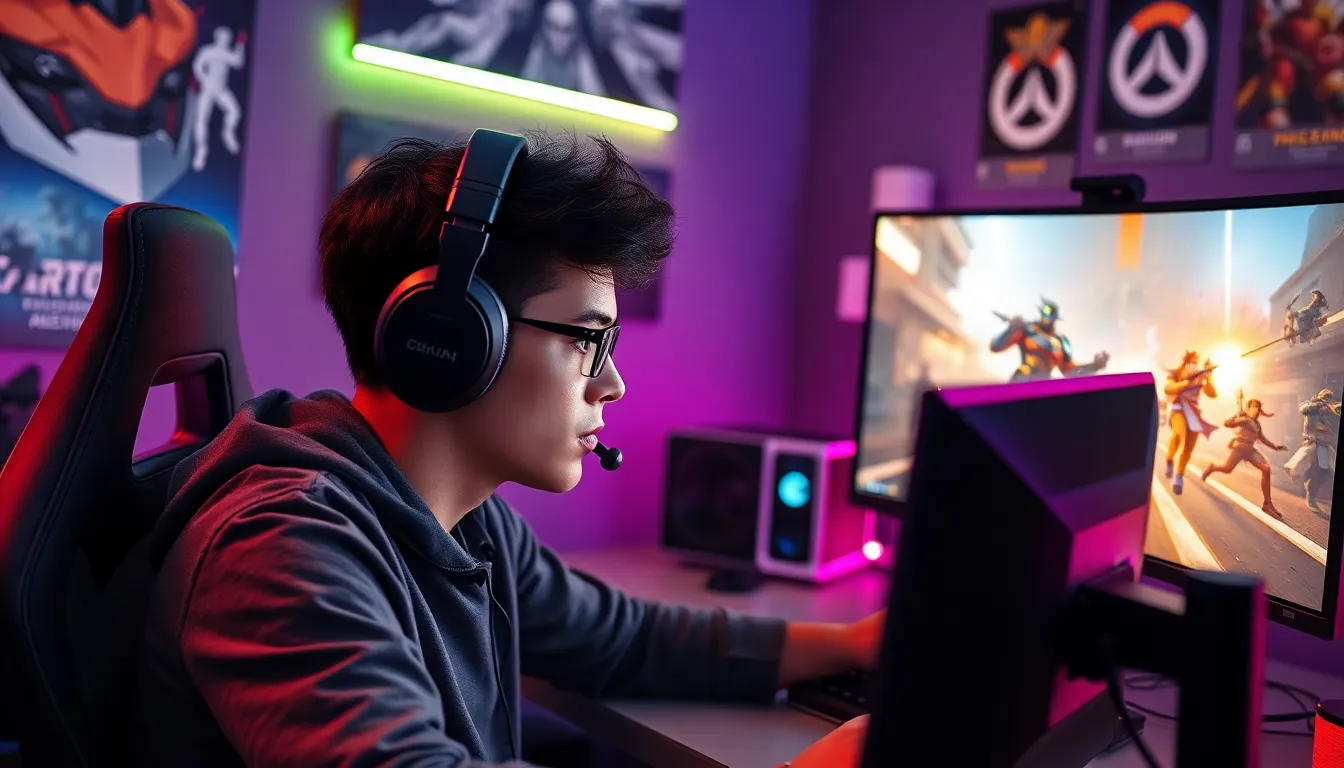Table of Contents
ToggleIn the vibrant world of Overwatch, every hero brings their unique flair to the battlefield. But what truly makes a game unforgettable isn’t just the flashy ultimates or the epic team wipes—it’s the playstyle each player adopts. Whether you’re a sneaky flank master or a steadfast shield bearer, understanding playstyles can elevate a casual match into a legendary showdown.
Overview Of Overwatch Playstyles
Overwatch features several distinct playstyles, each essential for team dynamics. Players can choose among tanks, damage dealers, and support heroes. The tank role focuses on absorbing damage and creating space for teammates. Reliable shield bearers such as Reinhardt and Winston exemplify this role effectively.
Damage dealers thrive on eliminating opponents and securing objectives. Examples include agile characters like Tracer and powerful ones like Reaper. Each hero in this category brings unique abilities to invigorate gameplay.
Support heroes play a crucial role in maintaining team health and enhancing survivability. Characters like Mercy and Lucio provide healing and buffs that can turn the tide of battle. Their positioning and decision-making can significantly impact team performance.
Players often adopt hybrid playstyles, blending elements from various roles. A player might switch between damage dealing and support based on the team’s needs. Adaptability becomes key in dynamic matches, as team compositions frequently change.
Strategic collaboration among players enhances the effectiveness of these playstyles. Clear communication and synergy can amplify the strengths of selected heroes. This collaboration leads to memorable moments and improved overall outcomes in matches.
Understanding playstyles not only enriches player experience but also fosters teamwork. As players become familiar with different roles, they develop a deeper appreciation for each hero’s contributions. The diversity in Overwatch playstyles creates an engaging and immersive gaming environment.
Types Of Overwatch Playstyles

Diverse playstyles define Overwatch, with each role impacting gameplay significantly. Players’ choices influence team dynamics, enhancing overall performance.
Damage Playstyle
Damage heroes focus on eliminating opponents and securing objectives. Characters like Tracer and Reaper excel in mobility and burst damage. Speed and precision define their approach, allowing quick strikes against enemies. Team coordination amplifies their effectiveness, as they create openings for tanks and support. Strategic positioning enhances their capability to outmaneuver adversaries. Many players adopt aggressive tactics, seeking frags while maintaining situational awareness. Ultimately, damage heroes thrive on coordination and adaptation.
Tank Playstyle
Tank heroes absorb damage, initiate fights, and create space for teammates. Examples like Reinhardt and Winston exemplify strength and disruption on the battlefield. They shield allies and control areas, making them vital for offense and defense. Positioning becomes essential, as tanks lead charges while soaking up incoming fire. Effective communication ensures optimal use of barriers and crowd-control abilities. Many tanks rely on strong team synergy, fostering a supportive environment for damage and support heroes. Ultimately, tanks form the backbone of each team, promoting strategic movement.
Support Playstyle
Support heroes maintain team health and provide utility. Characters like Mercy and Lucio prioritize healing and buffing allies. They enable sustain during engagements, ensuring the team remains competitive. Resource management becomes crucial, as supports must balance healing and positioning. Quick reactions to threats can turn the tide of battle. Coordination with tanks and damage dealers enhances overall effectiveness. Many players value the role of support, as it fosters resilience within the team. Ultimately, support heroes drive success through empowerment and protection.
Key Characteristics Of Each Playstyle
Understanding playstyles enhances strategic gameplay in Overwatch. Each playstyle provides unique abilities and team dynamics.
Playstyle Abilities
Tank heroes absorb damage and control space. They excel at generating barricades, with Reinhardt’s shield protecting teammates and Winston’s mobility creating rapid engagements. Damage dealers leak lethal power. Tracer and Reaper showcase agility, focusing on quick eliminations and flanking. Support heroes provide essential healing and utility. Mercy and Lucio prioritize team survival, enabling resilience during crucial team fights. Each hero’s abilities complement their playstyle, creating a balanced approach to combat.
Role In Team Dynamics
Tanks serve as the frontline barrier, fostering safety for teammates. Their presence encourages aggressive maneuvers, distracting opponents. Damage dealers push for objectives, capitalizing on opportunities created by tanks. Support heroes maintain health and awareness, allowing tanks and damage dealers to thrive. Effective coordination among these roles leads to enhanced synergy, reinforcing the need for clear communication. Players often switch playstyles mid-game, adapting to evolving scenarios and team requirements. Adapting to roles based on team needs strengthens overall performance and engagement in the match.
Strategies For Mastering Overwatch Playstyles
Understanding playstyles enhances gameplay and teamwork. Tanks create space and absorb damage, enabling aggressive tactics. For instance, positioning Reinhardt effectively provides a barrier that teams can exploit. Utilizing Winston’s mobility allows for quick engagements that disrupt enemies.
Adapting playstyles adds depth to gameplay. Damage dealers excel in exploiting openings created by tanks. Characters like Tracer can flank and secure eliminations, turning fights in favor of their team. Communicating with teammates about flanking routes or target priorities improves overall effectiveness.
Support heroes play an integral role in team success. They provide healing and utility, prioritizing the needs of frontline and damage dealers. Mercy’s ability to resurrect fallen allies can shift the momentum during critical moments. Investing time in mastering hero abilities and positioning creates profound impacts on game outcomes.
Combining different playstyles fosters greater synergy within teams. Switching between roles based on match circumstances allows players to respond to challenges effectively. Those who communicate strategies and adapt their play can significantly improve team performance. Observing enemy tactics and adjusting playstyles accordingly leads to better decision-making in fights.
Evaluating team compositions also enhances playstyle mastery. Recognizing strengths and weaknesses helps tailor strategies around the heroes selected. Flexibility in hero choices enables teams to adapt to various situational demands. Leveraging individual strengths and coordinating efforts will maximize team dynamics and overall competitiveness.
Mastering Overwatch playstyles is essential for enhancing both individual performance and team dynamics. Each role brings unique strengths that can turn the tide of battle when utilized effectively. By understanding the nuances of tanks, damage dealers, and support heroes, players can adapt their strategies to meet the demands of each match.
The synergy created through effective communication and collaboration not only elevates gameplay but also fosters a more enjoyable experience for everyone involved. Players who embrace the diversity of playstyles and remain flexible in their roles are likely to find greater success and satisfaction in their Overwatch journey. Ultimately, the richness of the game lies in its variety, encouraging players to explore and refine their approach to every match.




